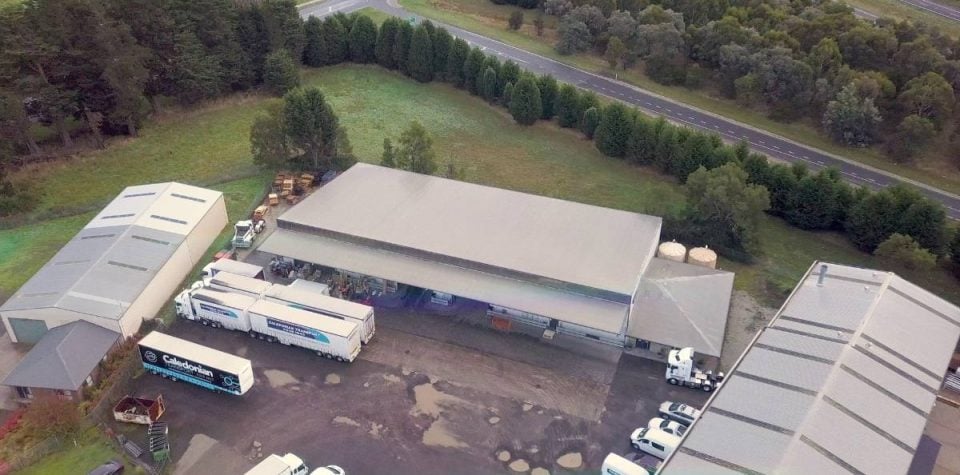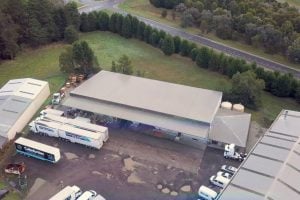Table of Contents:
- What is Freight
- The Cobb and Co Twitch
- Four Types of Freight
- Freight by Any Other Name is Still Freight
- Across Town or Across the World
From the smallest envelopes to plane-loads of packages and ship-sized shipments, the world’s economy is built on freight.
Freight forms a vital part of the world’s economy. It enables companies, producers and individuals to move their goods and services around the globe and facilitates local, national and international trade.
Whether you are a small company looking to move a package from one side of Melbourne to the other, a farmer getting a part for a tractor delivered to the Outback, a stamp collector in Sydney, a fruiterer in Freemantle, or a multi-national corporation shipping millions of tons of goods from Down Under to Over There, you’re going to be involved with freight in some way or other.
So what are the different types of freight? And how do you choose the right mode of conveying your stuff around town, around Australia and around the world? In this article, we’ll take a look at the different types of freight to help you make informed choices about the best way to send your goods via land, sea or air.
What is Freight?
The word FREIGHT is derived from a 15th-century German word, fracht, meaning “cargo of a ship.” The online Oxford Languages Dictionary defines freight as: “goods transported in bulk by truck, train, ship or aircraft.”
There is an almost infinite combination of ways that freight can be moved from place to place. In general, however, freight is consigned using one of the following methods.
Shipping
According to statistics published by the International Chamber of Shipping, freight consigned by ship accounts for 11 billion tonnes of goods moved across the world’s oceans annually.
The shipping of cargo by sea can be broken down into three main categories. These are:
- Containers. Comprising 20-foot and 40-foot varieties, most of the world’s manufactured products are now shipped in containers.
- Bulk cargoes. These are products such as cement, fertilizer, animal feed, liquids — tallow, acids and fuel — and resources such as iron ore and coal.
- Break bulk cargoes. This is freight that is conveyed on a vessel to a destination where the cardo is unloaded piece by piece. An example of this is the steel products — girders, sheet steel, reinforcing rod, rolled steel, and drilling pipe — that are manufactured offshore and landed on the wharf at their destination by crane.
Air freight
Carrying freight by air is expensive but has the advantage of being very fast. Mail, high-value but perishable products such as tuna, exotic fruits and cut flowers, radiopharmaceuticals, and livestock — horses, pets — are generally consigned as air freight to ensure their timely arrival at their destination.
Road freight
This one is pretty self-explanatory. Trucks on the road or courier drivers zipping through traffic are the most visible part of a freight network and which the public is most familiar with. Australia’s road freight network extends into all corners of the country: from the laneways of Melbourne to the settlements on the Gunbarrell Highway.
Rail freight
Australia’s first railway opened in Newcastle in December 1831. The railway, operated by the Australian Agricultural Company, serviced the A Pit Coal Mine on what is now the intersection of Brown and Church Streets in the city.
From this small start, Australia’s rail network now comprises 36,000 kilometres of track — the 8th largest in the world — ranging from suburban commuter lines to the narrow gauge lines used to haul sugar cane to the mills of Northern Queensland.
Intermodal freight
Shipping freight to, from and across Australia often requires multiple entities to accomplish the job. This is intermodal freight. So a package arriving in, say Brisbane and destined for Blackall, might make its way via a container ship to the Port of Brisbane, be loaded onto a truck and taken to a place where the container is “devanned” (unloaded in a controlled environment), sent by mail truck to Central Queensland and finally delivered by a courier to its recipient.
Intermodal freight is a safe, secure and cost-effective way to ship freight. However, it requires a highly-developed set of logistics systems to track and monitor its progress along the supply chain.
In Australia, vast distances and lengthy supply chains mean that freight logistics here have evolved in different ways than in other, smaller nations. But from small, precarious beginnings, Australia’s freight and logistics systems gave grown to become one of the most efficient and sophisticated in the world.
The Cobb and Co Twitch.
From its earliest days as a penal settlement, Australia was dependent on freight. Indeed, historians often refer to the first five years of Sydney’s life as “the hungry years” due to the fact that shipments of food, seed and agricultural equipment often took nearly a year to arrive from England. Sometimes, shipments of freight never arrived, the vessels carrying the supplies having foundered somewhere on the long, dangerous voyage.
Eventually, however, Sydney began to grow and thrive. Settlers pushed out into the hinterlands and the Outback. Other towns and cities grew up. And as the road networks expanded, freight was able to be moved to and from the growing urban hubs and their ports.
Bush, bullocks and boulders
Long before the railway and long before the roads, freight was moved across Australia’s vast distances by wooden drays pulled by teams of bullocks, mules or horses. Timber and tin for buildings, provisions for runholders, and loads of dried and non-perishable goods were piled up on these creaking vehicles and dragged through the bush and across the Outback.
Bullockies, muleteers and teamsters were renowned for their toughness, their vile language and their resourcefulness in the face of the many adversaries they had to overcome.
Cobb and Co
Passengers, the mail and gold were the predominant freight of this iconic Australian firm, founded in Melbourne in 1853 by four Americans from the goldfields of California. The name Cobb and Co has passed into Australian legend and has been celebrated by the likes of Henry Lawson in The Lights of Cobb & Co (1897) and by Slim Dusty in The Cobb and Co Twitch. The latter refers to an Outback method of fixing things with a piece of wire “twitched” up tight.
The Afghans
The arid climate of the South Australian Outback posed extra difficulties for the early farmers and runholders. Horse or bullock teams could not cope with the heat, lack of water and long distances involved, so in the 1850s cameleers and camels were imported from British India.
Camels proved to be an effective way of carrying wool, merchandise and supplies to and from the Outback and from 1850 until 1900, camels were instrumental in opening up Central Australia. Camels carried the materials needed to build the Australian Overland Telegraph Line and hauled freight to almost every mine and station in the South Australian Outback.
Their legacy is commemorated in the name of The Ghan railway train that now runs between Adelaide and Darwin along the same route that the camels once followed.
Back to the track
Throughout Australia’s European history, small carriers have been responsible for conveying freight to and from the remotest corners of the country.
One of the most famous of these freight contractors was Tom Kruse, who operated the cartage route from Maree in South Australia to Birdsville in far western Queensland, along the difficult and remote Birdsville Track. Immortalised in the black and white documentary film The Back of Beyond (1954), Kruse worked the mail and freight run from 1936 until 1957.
Constantly battling breakdowns, flooded creeks and shifting sand dunes, Kruse and his Leyland Badger truck delivered mail, general stores, fuel and medical supplies to the stations and outposts along the Birdsville Track.
Then and now
Better roads, the railway network, air freight, containerization and computerised logistics systems long ago replaced the transport battlers of Australia’s early days. But even though our freight may no longer be carried on lumbering camels, bullock drays or Leyland Badger trucks, the types of freight moved around the country — and around the world — can still be narrowed down into four main types.
Four Types of Freight.
E-commerce has now become the standard model for how most business is conducted. The rise of e-commerce has necessitated the development of ever more sophisticated systems for controlling logistics, transportation management, warehousing and supply chains.
But regardless of what the consigned goods consist of, in Australia freight is consigned according to the size of the load that it constitutes. And although there are always going to be exceptions to the rule, the four main types of load are as follows:
- LTL freight. Less-than-truckload (LTL) is the most common form of freight and the one that most people think of when it comes to deliveries. This is the sort of freight that is sent from a warehouse or distribution centre to a final customer. In short, it’s the sort of small-item freight delivered by couriers to your door.
LTL freight is highly cost-effective and efficient, with most LTL consignments being delivered in the morning.
- PTL freight. Partial Truckload Freight (PTL) involves bigger loads made up of different consignments. Think of those drivers in the TV show Outback Truckers who deliver loads made up of all manner of freight — from boats and buildings to generators and machinery — to distant locations out in the bush.
- FTL freight. This type of freight consists of large quantities of merchandise consigned to a single location. Full Truckload Freight (FTL) could be a load of refrigerated goods for delivery to a supermarket, a truckload of grain coming down from a Dubbo farm to a flour mill at Gunnedah, or a consignment of beer in kegs heading out from the Tooheys Brewery on Paramatta Road.
- Expedited freight. The definition of this type of freight is in its name. Expedited freight needs to be moved fast and efficiently. It is often conveyed in trucks that don’t stop for other pick-ups or deliveries and can be more costly. However, clients who request expedited freight will do so because the added costs are offset by the benefits of getting their freight delivered more rapidly.
Freight by Any Other Name is Still Freight.
There are many categories of freight, each one requiring specialist knowledge, skills and systems in order to handle it correctly and to ensure that it arrives intact and on time to its final destination.
Dangerous goods
These aren’t just confined to things that could blow up or burn. The term “dangerous goods” can include such things as radioactive material, pressurised canisters such as fire extinguishers and even spray marker paint. The Australian Dangerous Goods Code has all of the information you’ll need if your company is engaged to transport dangerous goods.
Ugly freight
This is a catch-all phrase used to describe goods that are odd-shaped, heavy, awkward or valuable. These goods can not be moved through the usual delivery channels and require special handling techniques. You can read more about ugly freight on our blog by clicking here.
Temperature-sensitive freight
Refrigerated or chilled freight is usually transported by operators who specialise in moving cargo that has to be kept at a certain temperature in a cool store, maintained at a constant humidity or connected to a system to regulate its temperature. The most common method used for shipping goods such as this is the “reefer” container which has an onboard refrigeration system that can be connected to a ship’s power supply or a ground-based electrical system in a container yard.
Across Town or Across the World
Sending your freight — whatever it is — out to your customers is one of the most satisfying parts of operating a business. And whether you organise the transportation of your own consignments of freight, or entrust your freight to some form of third-party logistics (3PL) operation, an understanding of how different types of freight will help you to decide on the best way to ship your products.
So if you’d like to learn more about the many different types of freight, and how to manage them for the benefit of your business, just follow the links contained in this article. Happy shipping!



